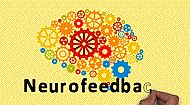
Four topics for today’s post, links to two videos, report of ground breaking research on neuroplasticity and EEG biofeedback, and a note on the limits of ADHD stimulant medication. The sources are far-flung, but they have in common support for the widely misunderstood value of Neurofeedback.
First, I am posting a link to a video that introduces the fundamentals of biofeedback, created by my colleague Michael Cohen in Jupiter, Florida. His four-minute animated presents the story of biofeedback (including neurofeedback) simply and clearly. I’d think it would be good for people over age 12. The message: if you can measure it you can change it. http://youtu.be/4Sin4QR4cwo
The second video is a “testimonial” I found when I viewed the above, also from Mike Cohen. As the YouTube commentary states, “April has suffered debilitating symptoms for over nine years since an illness left her with a severe traumatic brain injury (TBI). After just six weeks of neurofeedback, she has experienced significant improvement. This interview with April, her daughter, and Mike Cohen of the Center for Brain Training explores the power neurofeedback can have in people’s lives, even many years after a brain injury occurs.” http://youtu.be/gVUI3en9rJ4
Next is a report of the most significant new research to date on neuroplasticity in the brain resulting from EEG neurofeedback. The report, Neurofeedback Training Induces Changes in White and Gray Matter published online ahead of print in the prestigeous Clinical EEG & Neuroscience this past March 26, 2013, comes from the lab of Mario Beaurogard in Montreal. Beaurogard has a solid track record of brain research into the most philosophically interesting questions in neurofeedback (perhaps by this coming Fall, I will have had time to post a review his work over the past decade in more detail). Beaurogard and his group used MRI and white matter diffusion techniques (with SHAM neurofeedback comparisons) to study brain connectivity changes with attention training Neurofeedback (designed to increase beta activity in the right frontal and parietal areas) in university students with ADHD.
Their final paragraph heralds the significance of the research and is worth quoting in full: “In summary, our results show that a neurofeedback (NFT) protocol aimed at enhancing b1 activity can enhance visual and auditory sustained attention performance. Importantly, our results indicate that this protocol can induce modifications in white matter pathways implicated in sustained attention. Furthermore, such a protocol can produce grey matter volume alterations in brain regions involved in this kind of attention. After 50 years of research in the field of neurofeedback, our study constitutes the first empirical demonstration that NFT can lead to microstructural changes in white matter and grey matter (emphasis added)”. http://eeg.sagepub.com/content/early/2013/03/19/1550059413476031
Finally, a story in today’s Wall Street Journal reviews studies on the poor evidence for cognitive enhancement of stimulant drugs for kids with ADHD. The key point is that “millions of children and college students take medication to treat ADHD and to help them perform better in school. But there isn’t great evidence to suggest that these drugs actually improve academic outcomes.” Shirley S Wang’s story goes on:
“Stimulants used to treat ADHD like Ritalin and Adderall are sometimes called “cognitive enhancers” because they have been shown in a number of studies to improve attention, concentration and even certain types of memory in the short-term. Similar drugs were given to World War II soldiers to improve their ability to stay alert while scanning radars for enemy aircraft.
However, a growing body of research finds that in the long run, achievement scores, grade-point averages or the likelihood of repeating a grade generally aren’t any different in kids with ADHD who take medication compared with those who don’t. (Typically, studies take into account accommodations schools provide kids with ADHD, such as more time to take tests.)
